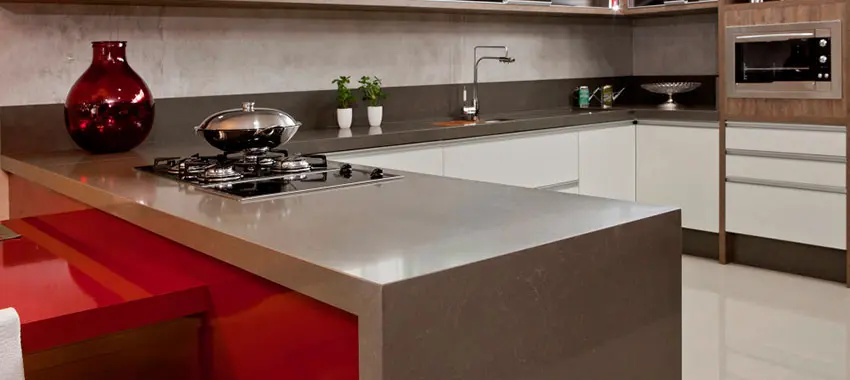
How to Seal Your Granite Counter top
- Posted on
- FlintStoneTops
Granite countertops are one of the most beautiful investment you can add to your kitchen. It’s important that you follow care and maintenance procedures to ensure that it last longer. Sealing your granite countertop will not only make it last longer but will also ensure that it doesn’t harbour bacteria and will look good for longer. The granite countertop installer will seal the granite before installation to make sure that your countertop is nonporous.
Why You Should Seal Your Granite Countertop
- Make the countertop stain resistant
Sealing the countertop will ensure that spills don’t penetrate the granite countertop.
- Prevent Etching
When sealed the countertop will not etch due to acidic spills
- Durability
Sealing the countertop will help prevent the countertop from exposure to elements that will damage the countertop.
Choosing the Right Sealant
There are different kinds of sealant to choose from and it’s important you ensure that the granite contractor uses the right one. The sealant needs to penetrate as deep as possible because that will ensure that the countertop is stain resistant, and keep away bacteria. After sealing wash the top with mild detergent, water, and a soft cloth. Make sure you use the detergent meant for granite countertops.
Make sure that the sealing process is done by a professional who knows how to seal the granite using high-quality sealing products. A high-quality sealant will keep away moisture and ensure there are no bacteria. Other liquids such oil that may cause stains will also not penetrate the countertop. Below some qualities of good granite countertop sealers. Its best to buy the granite from the granite company, the experts will do the sealing and installation for you.
- Doesn’t alter the colour of the countertop
A good sealant will not alter the colour of the countertop. Make sure the sealant used will not change how the veins of the countertop appear
- Dries quickly
The sealant should dry quickly. The sealant that takes too long to dry may not be effective
- Efficient
The sealant should seal out water and any other liquids after application on the countertop
- Usable on most countertops
Use a sealant that works on most countertops
How to Test Whether a sealant is Effective
Pour ¼ cup of water on the countertop. Leave the water for a while to see whether the water will be absorbed
After waiting for about 30minutes check whether the water has been absorbed. Depending on how fast the sealant is absorbed seal your countertop often
How to Seal Countertops
It’s best to let the granite countertop dealer seal your kitchen countertop. That will ensure a successful sealing process with no risk of the countertop absorbing liquids and staining. However below is the process to follow while sealing your countertop
- Clean the counter with water, mild soap and a cotton cloth. Get a dry cloth and make sure there is no water on the countertop. You can give it a few minutes to ensure its dry
- Make sure the countertop is completely dry and using a clean cloth apply the sealant. Use a lint free cloth when applying the sealant
- Dip the cloth into the sealant and wet it. wipe the sealant on the countertop making sure that the whole surface has the sealant. Make sure even the edges are soaked.
- Give the countertop time to dry and then apply a second coat of the sealant. Let the second layer dry. Give the sealant 24 hours to dry completely. During the 24 hours don’t use the countertop to prepare food.
- You can carry out the water test to ensure the sealing process is effective.
Sealing your granite countertop properly will ensure you keep out bacteria, prevent staining giving your countertop the chance to last a lifetime. Make sure after you seal your countertop you follow the right maintenance procedure.
Most granite installers Rockville will seal the countertop before installing it, however, if you already have a granite countertop installed the granite contractor will advise you on the number of times you seal your countertop depending on how often you use it. The countertop dealer will assess how often your countertop is used and advise how often it should be sealed. Make sure you follow the sealing schedule to avoid staining and damaging the countertop with liquids

